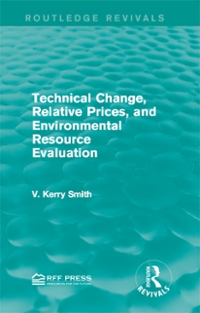Question
The supply of water is a major public policy concern in the United States and even Canada. The Figure shows U.S. drought conditions in 2003.
The supply of water is a major public policy concern in the United States and
even Canada. The Figure shows U.S. drought conditions in 2003.
Environmental authorities in both countries have promoted pricing as a means to
stimulate conservation of water.
Source: Environmental Protection Agency
Water is used by households as well as businesses. The price elasticity
of the demand for water has been estimated to range from -0.20 to -0.40 among
households, and from -0.50 to -0.80 among business users.1
However, not all water users are subject to metering. Even among
households subject to metering, the price structure might conflict with
conservation. The U.S. Environmental Protection Agency's Community Water
System Survey for the year 2000 reported that 23% of water utilities levy a "flat
fee" under which the user pays a fixed charge regardless of usage.
Environment Canada reported that, in the year 1999, 43% of residential
users were charged a flat fee, while another 12% were subject to a declining rate
structure within which the unit price decreased with usage. Average
consumption was 70% higher among users subject to flat fees as compared with
those subject to volume-based rates.
2007, Ivan Png. This case is based, in part, on Holly Stallworth, "Water and Wastewater
Pricing", Office of Wastewater Management, U.S. Environmental Protection Agency
EPA 832-F-03-027, and
1 Beecher, J.A. et. al. Revenue Effects of Water Conservation and Conservation Pricing: Issues
and Practices. National Regulatory Research Institute, Columbus, Ohio (1994).
Discussion Questions
(a) How do you expect the price-elasticity of the residential demand for water
to vary with the total annual consumption of the household?
(b) Who benefit relatively more from a flat fee? Poor or rich households?
(c) Considering that a large proportion of residential users face a flat charge
or even decreasing unit prices, do you think that the price-elasticity of
residential demand is under or over-estimated?
(d) What are the implications of your answer in (c) for raising prices as a
conservation polic
Step by Step Solution
There are 3 Steps involved in it
Step: 1

Get Instant Access to Expert-Tailored Solutions
See step-by-step solutions with expert insights and AI powered tools for academic success
Step: 2

Step: 3

Ace Your Homework with AI
Get the answers you need in no time with our AI-driven, step-by-step assistance
Get Started


